The Forest Society's Emma Gipson Forest in Greenfield provided a rare learning opportunity
- Tags:
- Education,
- Forestry,
- Timber Harvesting
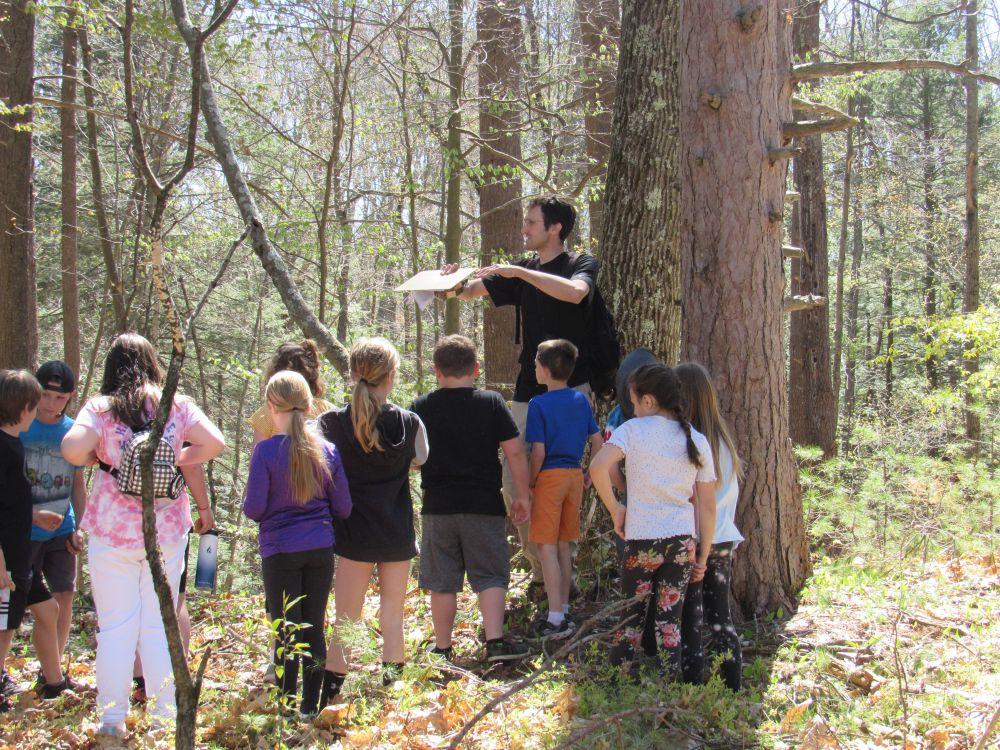
Local students visit the timber harvest at Emma Gipson Forest in center of Greenfield, NH. (Photo: Meredith Reed O'Donnell)
An opportunity presented itself for a community education field trip in the Center of Greenfield where the local Greenfield Elementary School lies within walking distance of the public library in center of town.
On a hillside behind the library - overlooking an appropriately spring 'green field' - is the Forest Society's 18-acre Emma Gipson Forest.
The students in 3rd and 4th grade classes arrived to meet Forest Society staff - field forester, Gabe Roxby and Sr. Education Director, Dave Anderson - for a walking tour of the recent timber harvest of white pine by logging contractors D.H. Hardwick and Sons.
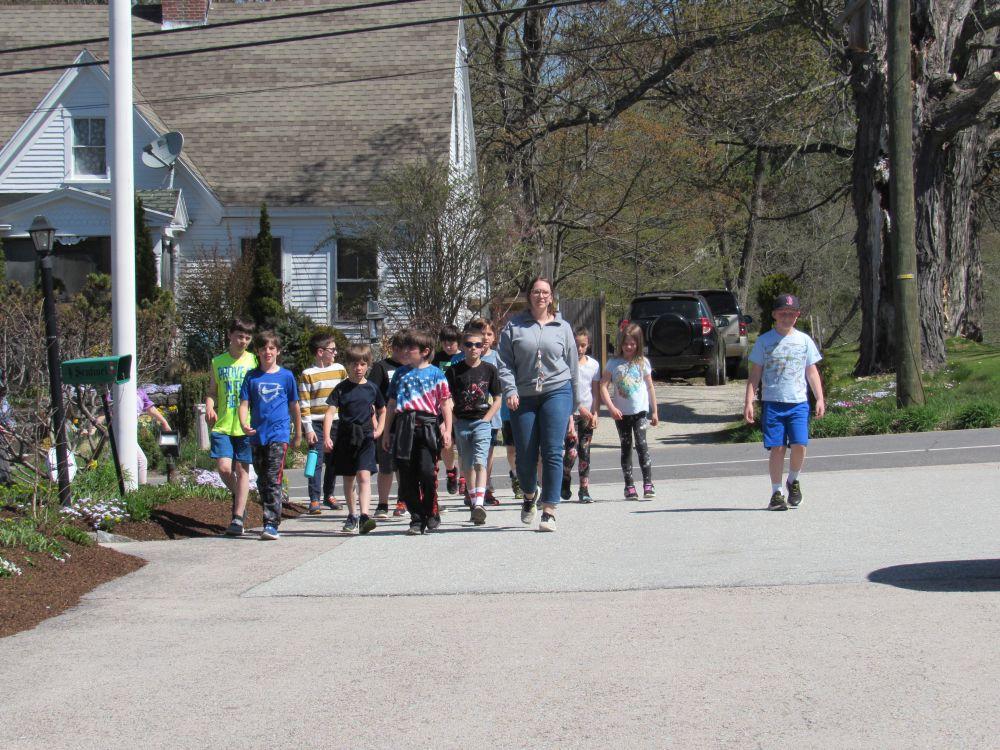
Gabe explained:
"I have been trying to pull together a timber harvest tour for kids for a few years now, and this harvest presented a great opportunity. The class was able to walk to the site, and the teachers and the principal were very supportive."
Students wasted no time after introductions in heading for the stone wall at the edge of the woods. As the group broke into a sprint to the woods, Gabe shrugged and jogged after them to catch up. We gathered along a former trail and skid trail to begin our tour.
We hoped to open a conversation about forests, wildlife, cutting trees, growing trees - and how to age trees by counting annual rings on a cut log or stump. The students were at ease in the woods with impressive knowledge of forests, trees and wildlife.
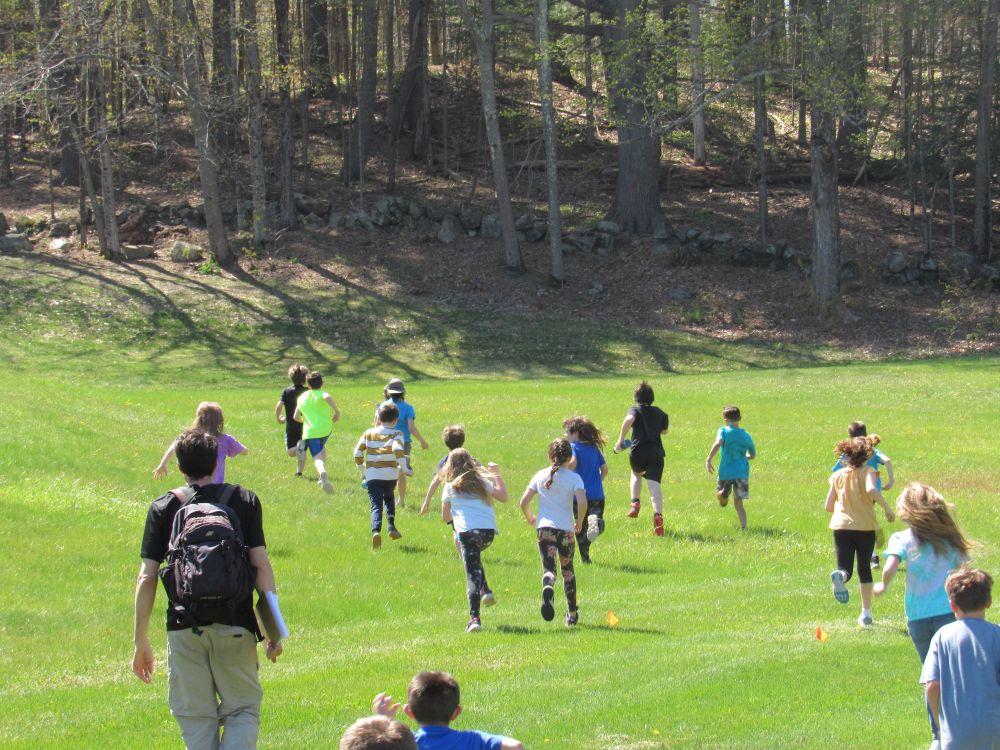
The goal of the tour was to ask students about what they saw and what they knew about why we were cutting some of the trees and why.
"Before the field trip, I sent the teachers a link to a video of me reading the book 'Why Would Anyone Cut a Tree Down?' (put out by the US Forest Service) to my own kids," Roxby said. "When I asked them this same question in the woods, many gave great answers."
Some of the students talked about allowing more sunlight to reach the forest floor or using wood for lumber or firewood. One student talked about creating opportunities to let younger trees grow.
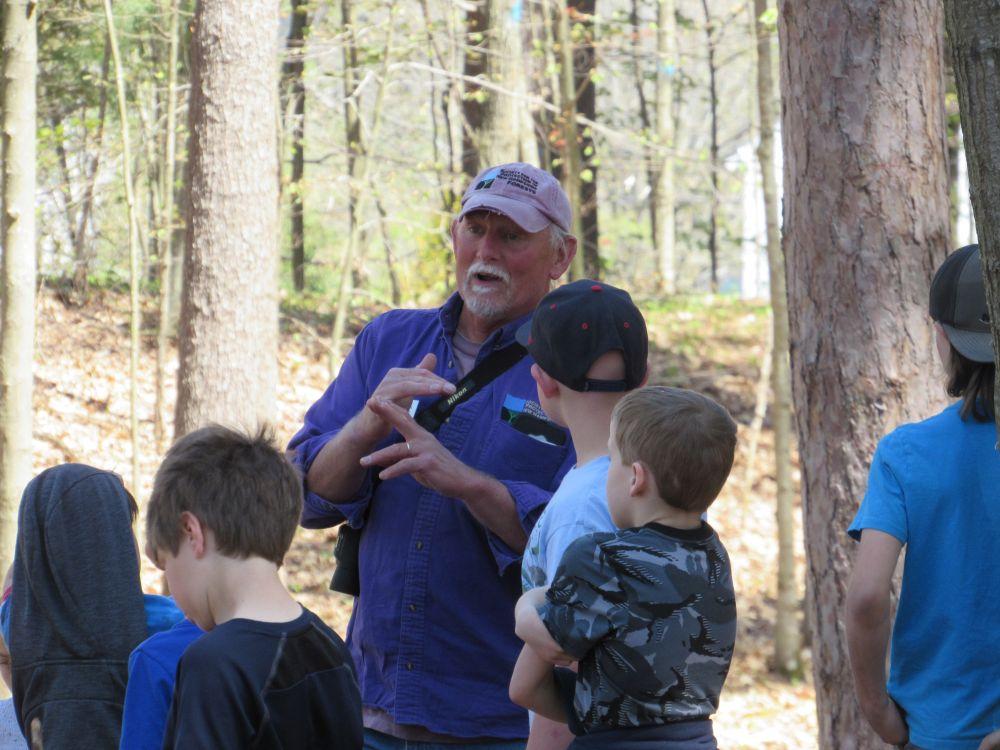
We talked about red pine trees used by bears as scent marking posts. We talked about red oak trees with pink flagging ribbons tied on them - the crop trees to be protected during logging and released to grow into the new sunlight reaching the understory due to the white pine thinning operation. Red oaks and white oaks provide valuable lumber but also acorns for local wildlife.
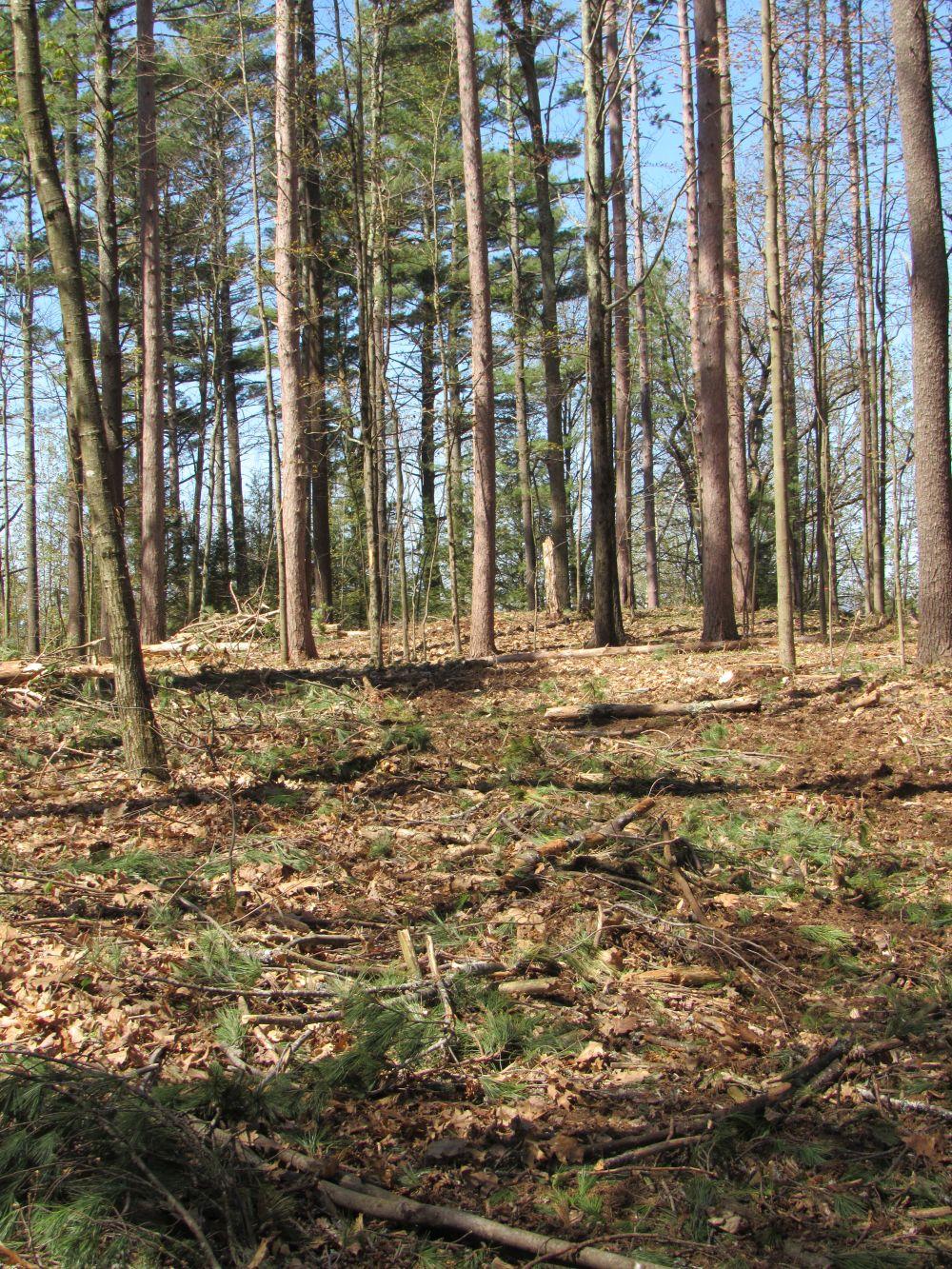
Forester Gabe Roxby shared that the ring count had totaled 115 years of annual growth. Cut in 2022, the white pines began growing on what was likely a former pasture ringed wtith stone walls in 1907.
We walked to watch the grapple skidder on an adjacent section of forest arrive to grasp a "hitch" or bundle of white pine stems left by the feller buncher during the cutting phase of the harvest. We arrived during the skidding phase as cut hitches were being skidded to the nearby timber landing to be sorted into products based on quality and species and diameter.
Most of the timber volume being cut at the Gipson Forest harvest is white pine sawlogs and some chipping of smaller diameter tops and lower quality wood.
In the open sunshine along a skid trail, we asked: "What do the tiny, wind-blown seeds of white pines need to grow?"

Forester Gabe pointed out where trees were cut and removed and where remaining trees were left to grow for a future timber harvest on the same tract.
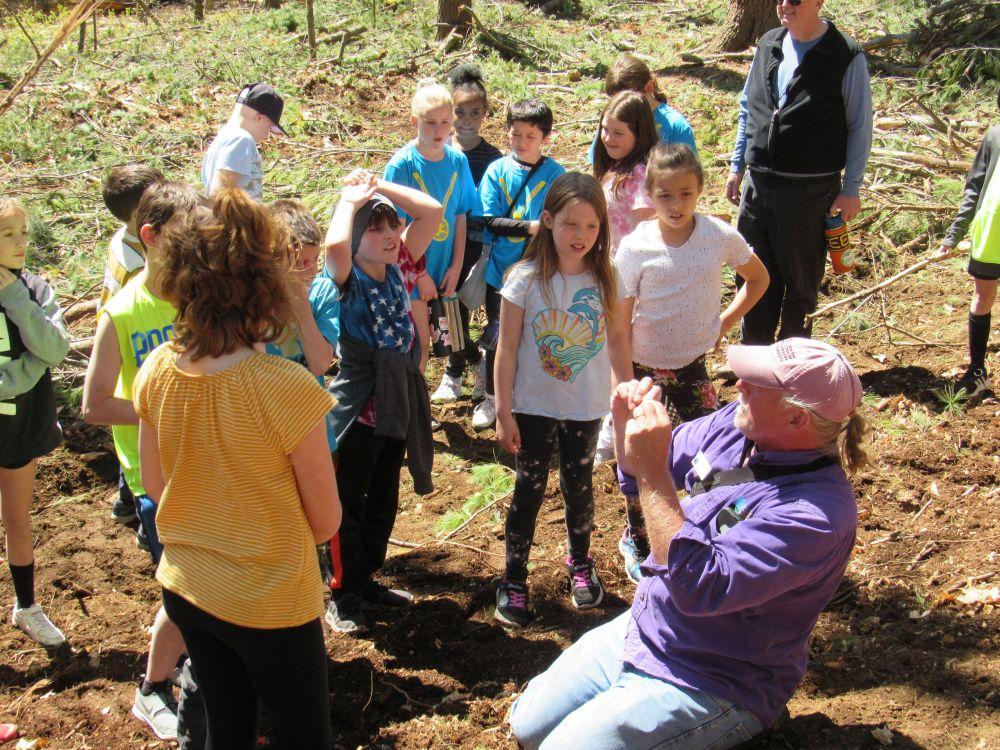
What do you see? Why would we cut trees?
The Greenfield students and their teachers hiked along the top of the hill while looking at growing trees and identifying species: confers including white pine and red pine in the overstory and white birch, red oak and beech in the hardwood understory.
We talked about balancing the impacts of removing trees with heavy machinery on the single site with the goal to create new openings of young forest growing within the surrounding woodland. Creating this balance requires tradeoffs: logging creates temporary distrubance of noise and seemingly 'messy' slash and a sudden change for the wildife and for local residents unaccustomed to the timber harvesting.
The longer term goal is to create a healthy, vigorous growing forest with layers of vegetation and sunlight reaching young saplings and stimulating growth of ferns or berry producing shrubs or stimulating growth of oaks for acorns as food for wildlife.
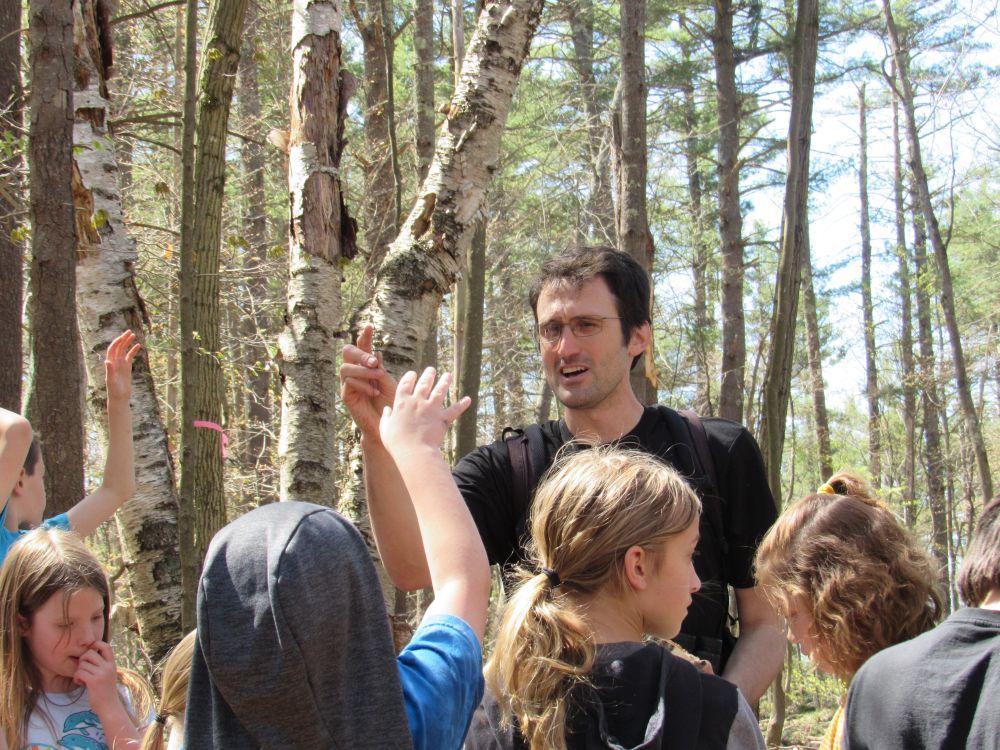
Gabe Roxby reflected on the teaching experience on the timber harvest he worked to mark and supervise by working with the logging contractors:
"Bringing 33 enthusiastic youngsters into the woods was quite the experience! They were engaged, and full of questions. Some students were very familiar with forestry and logging (one knew the brand of the feller-buncher used to cut the trees) and some others were not. A few had some reservations about cutting trees, and we tried to address those questions as best we could."

It's not every day that we have the support of the local community and school administration and teachers to give students the opportunity to visit a Forest Society Reservation in the center of their own hometown. We were thrilled to share how the Forest Society manages forests for wood products and for wildlife with the understanding of the community concerns for aesthetics and future recreation potentials.
The Emma Gipson forest provided the perfect learning opportunity on a warm May morning to walk in the woods to share and learn together.
We are grateful to the teachers and administration at Greenfield Elementary School and to the students for their enthusiasm and willingness to learn about a timber harvest taking place right in their own backyard.
Learn More
- Cutting for Conservation: To learn more about the Forest Society's timber harvest work, visit https://forestsociety.org/timber-harvesting.
- To follow along with #ForestryFriday each week, follow the Forest Society on Facebook and Instagram.
- Watch a video below of Forester Gabe Roxby reading, Why Would Anyone Want to Cut a Tree Down? as well as other children's books, on Fireside Friday.
